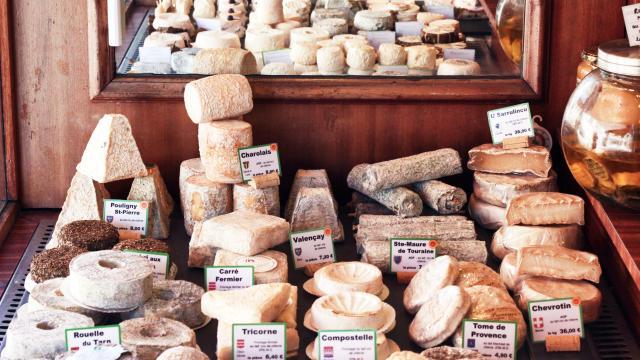It has come to my attention that not everyone is eating their brie rind. This is silly, because brie rind is good, and — if you’re scraping the the gooey center out of a wedge on a communal cheese plate — it’s pretty dang rude. But even beyond brie, a lot of folks shy away from perfectly edible, sometimes delicious rinds, and there’s simply no reason for it.
[referenced url=”https://www.lifehacker.com.au/2017/12/fromage-fort-is-an-amazing-spread-made-from-cheese-plate-scraps/” thumb=”https://i.kinja-img.com/gawker-media/image/upload/t_ku-large/werljwbsok2rbkatd42q.jpg” title=”Fromage Fort Is An Amazing Spread Made From Cheese Plate Scraps” excerpt=”There is no such thing as “leftover cheese” but, if you are a cheese collector such as myself, you probably find yourself with little nubs and ends of various dairy treasures. You could keep making increasingly tiny cheese plates, or you could make fromage fort.”]
Don’t eat the wax
By “rind”, I mean the hardened outer portion of the cheese that develops during the ripening step of the cheese-making process. I do not mean the red wax around your gouda, or the cloth around your cheddar. These pieces of inorganic matter won’t poison you, but they are not edible, and they will not taste good. (This goes double for Babybel; I use that wax for my art.)
Try the white stuff (it’s delicious!)
According to Food & Wine, there are three main types of rind: Bloomy, washed, and natural. The bloomy rind is the pale, white or off-white, kinda fuzzy looking rind you see on the outside of soft cheeses (like brie), and it’s an important part of the cheese. (Yes, it is all due to mould, but mould is what gives us cheese, and many wonderful antibiotics.) Not only is this type of rind difficult to elegantly remove from its soft center, it often has a pleasant, earthy, rich flavour that is meant to be enjoyed as part of the cheese eating experience.
If, however, the rind has separated from the cheese or is speckled with spots of dark mould on it, you should skip it, because that’s not how things are supposed to be.
Orange you glad you ate it?
Washed rinds look orange, feel sticky, and sometimes smell really weird. They vary in flavour, and I cannot tell you that you will enjoy the rind of every washed cheese you taste, but you very well might, particularly when it comes to the soft wash rinds. Once the cheese has set, it is treated with a brine that is often accompanied by delights such as cider, wine, cognac, or beer; sometimes they’re also coated in herbs, flowers, or some sort of ash. These salty, thick, and slightly meaty rinds are packed with flavours lovingly selected by the cheese maker, and they tell the story of the cheese.
Shaving them off means you’re cutting away a lot of flavour, and being (a little) disrespectful. Taleggio is perhaps the most iconic of the washed rinds and, while the smell can present an initial challenge, it’s worth trying — rind and all — at least once.
Save it for stock
Then there are the hard, natural dudes. This is your Parmigiano Reggiano and any other cheese that was aged and air-dried, letting a rind develop on its own. There’s certainly no harm in trying them, but they can be a little hard on the teeth (or just plain bitter), and the tougher specimens are best saved for flavoring stock. It should also be noted that there can be some overlap between categories — though Gruyere is a washed rind cheese, that rind is very hard, and no fun to chew.
Then there is you
You will probably not enjoy every rind you put in your mouth. Heck, some people find the texture of the brie rind — one of the most accessible rinds — off-putting. Whether or not you eat a cheese rind comes down to personal preference, but please: Try it out before cutting it off. Like any food created by a labour-intensive, almost artistic process, cheese has a story to tell, and the rind contains a lot of the plot. Basically, no rind is going to hurt you, so give it a taste, make your choices, and enjoy your cheese.

Comments